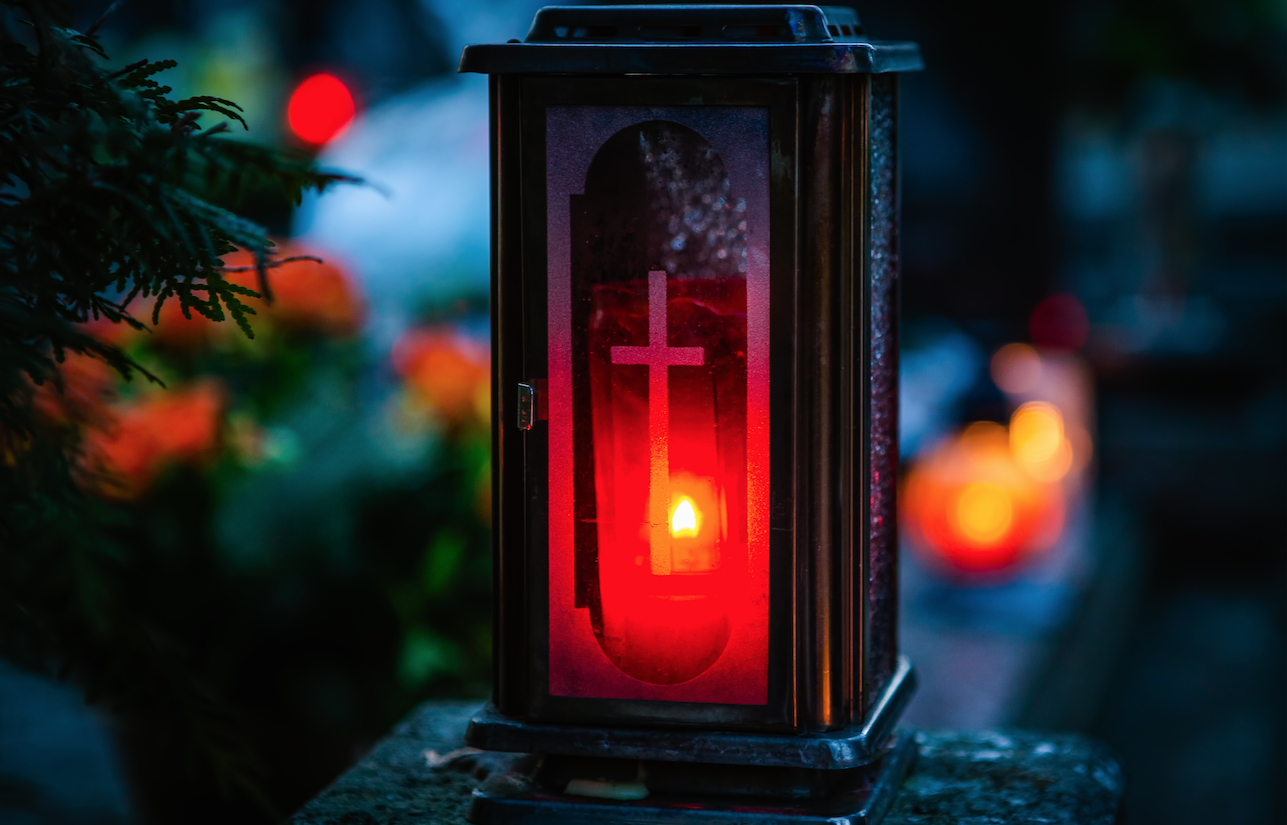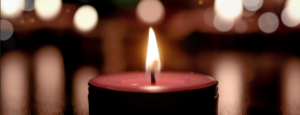
TAKE ME TO THE MOVIES!

The liturgy does not have a ceremony for every loss but it does offer a rich ritual repertoire from which we can draw inspiration and hope. From September 2021 through June 2022, I will explore with you here on this blog how we can ritually recognize, hold and welcome the grief among us.
On this Commemoration of All Souls, I am reminded of the chant Dies Irae, a liturgical meditation on the Last Judgment. From at least the mid-14th century it was sung as a Sequence on this day and in Funeral Masses. The Second Vatican Council (1962-1965) removed the Sequence to shift the liturgical emphasis from judgment and fear towards faith in the resurrection. As a result, the Dies Irae may no longer be familiar to average Catholics. Or is it? The melody of this chant is found in at least 40 movie soundtracks! It is used to indicate impending danger, not only in spooky horror films but even in the children’s film Frozen, wherein its first four notes are the siren call that beckons Elsa into the unknown. Its persistent use in film up to the present-day points to the melody’s dramatic power in conveying the intense and complex suite of emotions that accompany contemplation of what awaits after death.
Recently, I was invited to lead a group of psychology students in exploring the role of ritual in grief. Their course syllabus included videos of grief rituals from around the world. When I asked them to identify common elements across rites, they noted an emphasis on physicality, association with a place, communion with God, the deceased and community, and concern for the future of the soul. The external rituals reflected core beliefs. The students remarked that these elements are increasingly absent from funeral trends in contemporary North American society. For example, modern “celebrations of life” tend to take place without the body present, ashes of the deceased may be scattered or shared and although the bereaved may gather, the ritual is more a curated retrospective of the deceased’s life on earth rather than a concern for the future of the soul, its relationship with God, and potentially ongoing relationship with the living. The counsellors-in-training concluded that it could be important to understand what people’s beliefs are in order to help them grieve. However, today so many people consider themselves spiritual but not religious. What is the role of ritual when beliefs are undefined or ambiguous?
“Celebrations of life” are usually singular upbeat affairs but grief is a complex process that benefits from iterative gestures that provide robust support over the long term. Beyond the movies, the Dies Irae remains part of the Catholic liturgical tradition as an optional hymn in the Liturgy of the Hours in the week prior to Advent or as an anthem in Funeral Masses and on All Souls. It challenges modern sensibilities from the start by naming the fear and trembling we will feel when asked to account for our sins on the Last Day: “Day of wrath! O day of mourning! … Oh, what fear man’s bosom rendeth … Death is struck and nature quaking.” But unlike modern celebrations that may only look back at the good accomplishments, this hymn shows us how what we do today – good or bad – has eternal consequences. In this way it gives our lives deep meaning and perhaps explains the universal symbolic status of the hymn’s melody in film.
Just as the grief process might move back and forth though sadness, anger, regret and acceptance, the Dies Irae also moves from narrating the drama of the End Times to a prayer of hope addressing our King of Majesty, Fount of pity, kind Jesu!, who actually seeks each one of us out with mercy to bring us salvation. Today’s annual Commemoration of All Souls encourages us to draw upon the Church’s ongoing ritual support in navigating the loss of our loved ones through the devotional practices associated with the day – cemetery visits, praying for the dead and reflection upon the poetry and music of our tradition. One might be tempted to resent the appropriation of this sacred melody for trivial entertainment but if it is true that life imitates art, then take me to the movies!
Simone Brosig is an educator, author, and liturgy consultant with a PhD in Medieval Studies and a MA in Pastoral Liturgy from the University of Notre Dame. She writes and teaches about living the liturgy. Simone is a near-native Calgarian, who enjoys spending her free time “forest bathing” in the Rockies and learning languages. Simone’s new book, Holy Labours: A Spiritual Calendar of Everyday Work, can be found here.


